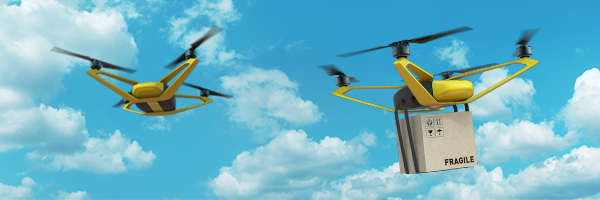
Session 4 of the ICAO DRONE ENABLE Webinar Series
DATE & TIME:
24 March 2021, 0900 Montreal (90 minute webinar)
REGISTRATION LINK:

BRIEF DESCRIPTION:
With the ever-increasing dialogue on unmanned aircraft systems (UAS), remotely piloted aircraft systems (RPAS), "drones" etc. the discussion is largely influenced by the technical and regulatory debate. How to safely grant UAS flight in segregated, hybrid and non-segregated airspace are some of the major challenges which influence the current discussions. Concepts such as detect and avoid (DAA), remain well clear (RWC), Lost C2 Link (LC2L), unmanned traffic management (UTM) come to mind. While all these topics are an important and necessary, one element which might not be at the forefront, is the human dimension, both on the ground and in the air. The personnel required to operation RPAS or UAS can range from a single remote pilot to a crew with dozens of people, particularly for larger RPAS, and as such the human interactions with the RPAS are paramount. This webinar will examine many of the human dimensions, interactions and interventions around the topic of the UAS and UTM. This will include the new challenges the human (in the loop) has to face, how remote pilots/airspace managers are coping with new operations, the question of individual liability and what types of joint cognitive systems are being implemented to assist with coping with the new technological environment.
MODERATOR:
Marc Baumgartner, IFATCA

SPEAKERS:
Roberto Sabatini, RMIT University
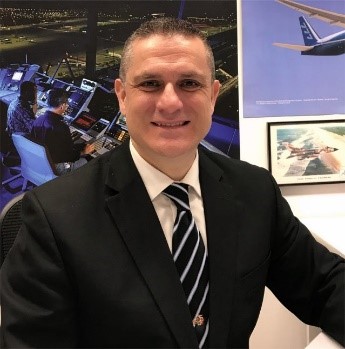
Paola Lanzi, Deep Blue
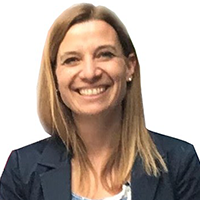
Sandra Gregoire, FAA
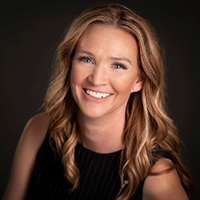
Lieutenant Colonel Aaron D. Brown, US Air Force

Klaus Meier, Chief Technology Officer, Skyguide
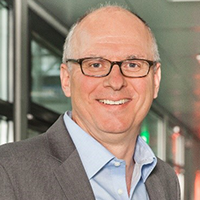
Alan Hobbs, San Jose State University Research Foundation/NASA Ames

MODERATOR/SPEAKER BIOS:
Marc Baumgartner
Marc is working as an operational air traffic controller and Centre Supervisor in Geneva ACC since over 25 years. Since 2019, Marc is the Chair of the Eurocontrol Performance Review Commission. Marc has been a member of the Performance Review Body/Performance Review Commission from 2011 until December 2016 and chaired the operational sub-committee of the PRC/PRB since September 2012. Until April 2010 he has been the President and CEO of the International Federation of Air Traffic Controllers' Associations (IFATCA) representing the technical and professional interests of more than 50'000 air traffic controllers from 137 States around the globe (8 years). He coordinates the SESAR and EASA activities of IFATCA. On behalf of IFATCA he has organised three digitalization conferences and has coordinated possible input to the Experimental Research of SESAR on future Joint Cognitive Human Machine Systems.
Roberto Sabatini
Roberto Sabatini is a Professor of Aerospace Engineering and Aviation at RMIT University (Australia) with 30 years of industrial and academic experience in Avionics, CNS/ATM and Autonomous/Intelligent Systems for civil and military applications. His research focuses on: Aerospace Robotics and Autonomous Systems; Guidance, Navigation and Control; GNSS Augmentation; CNS/ATM Evolutions and UAS Traffic Management; Advanced Air Mobility; Intelligent Satellite Systems; Remote Sensing and ISR; and Cognitive Human-Machine Systems. Currently, Rob serves as Chair of the Cyber-Physical and Autonomous Systems Group and Deputy Director (Aerospace) of the Sir Lawrence Wackett Centre. Additionally, he is the current Chair of IEEE Avionics Systems Panel (Aerospace & Electronic Systems Society). He is a Fellow and Executive of the Institution of Engineers Australia, a Fellow of the Royal Aeronautical Society, and a Fellow the Royal Institute of Navigation. In his career, he has authored/co-authored over 350 publications and is the recipient of prestigious awards, including the NATO-RTO Scientific Achievement Award (2008), the SAE Arch T. Colwell Merit Award (2015), the SARES Science Award (2016), the Northrop Grumman Professorial Scholarship (2017), and the Australian Defence Industry Scientist of the Year Award (2019).
Paola Lanzi
Paola is an R&D Project Manager and a senior HF Specialist from Deep Blue, with more than 20 years of experience in the fields of human factors, validation and safety assessment in ATM. Deeply involved in the scientific research on the integration of humans and technology for innovation, she has a noteworthy experience in managing projects dealing with the design and validation of new concepts of operations for aviation and air traffic management, the organization and conduct of human-in-the-loop experiments such as real-time simulations, shadow-mode trials and live-trials and the dissemination of scientific project results to different key audiences and stakeholders. She also contributed to designing and developing guidelines and methodologies for HF assessment and some of the Validation and HP Assessment Processes used in the field such as E-OCVM and the SESAR HP Assessment Process.
Since 2011, she has been promoting the research on liability impact of automation as a means to feed the design process of new automated technologies for Air Traffic Management, aviation and safety-critical domains in general. In this specific area, she is one of the designers of the Legal Case method, being successfully used for the proactive assessment of liability implications of new concepts of operations and tools. Her work has been published in national and international peer-reviewed journals and books. She is also a tutor in Liability and Automation at EUROCONTROL IANS and Lecturer in Communication and Human Factors at the University of Arizona - Orvieto Study Abroad Program.
Sandra Gregoire
Sandra Gregoire has been employed by the FAA as an Air Traffic Controller in Syracuse, NY since August 2009. She transitioned to an office job designated as the Staff Specialist at the Syracuse Air Traffic Control tower in January 2016. As the Staff Specialist she maintains currency as a controller. She is directly involved with the 108th Operations Group MQ-9 Reaper operation flying in and out of the Syracuse Class C airspace. Her role is to help safely integrate them in the National Airspace System (NAS) with manned aircraft. To date, Syracuse International Airport is the only commercial Class C airport that allows this type of RPA operation. Sandra was asked to speak at the National Air Traffic Controllers Association (NATCA) annual safety conference, Communicating For Safety (CFS), in October 2018. She has also been directly involved with small UAS operations ranging from individual operations to commercial operations at the UAS Test Site at Griffiss International Airport.
Lieutenant Colonel Aaron D. Brown
Lieutenant Colonel Aaron Brown is the Commander of the 108th Attack Squadron, 174th Attack Wing, Hancock Field, Syracuse, New York. He is directly responsible the instructors and support personnel, enabling over 3000 annual flight hours in support of the MQ-9 Formal Training Unit that produced 60 new MQ-9 crews in FY2019.
Lieutenant Colonel Brown has served over two years as the 108th Attack Squadron Director of Operations. Previous assignments include 174th Operations Support Squadron Chief of Current Operations and the 174th Launch and Recovery Detachment Commander. Lieutenant Colonel Brown spearheaded projects including the first routine MQ-9 flights from Hancock Syracuse International with chase aircraft, the first ANG interstate MQ-9 flights to exercises in Michigan, Florida, and Maryland, and the first Ground Based Detect and Avoid system at a commercial airfield that eliminated the need for chase aircraft.
Lieutenant Colonel Brown is a 2001 graduate of Texas Christian University and ROTC Detachment 845, Fort Worth, Texas. He served over 12 years on active duty as an F-16C pilot, T-38C Special Undergraduate Pilot Training instructor, and AFSOC MQ-9 pilot before joining the New York Air National Guard in 2014.
Klaus Meier
Klaus Meier leads skyguide's Engineering and Technology department. Besides providing safe and reliable air-traffic-management systems, his strategic objective is to transform today's classic systems towards a flexible architecture and a new operational concept. The strategic initiatives behind those objectives are the Virtual Center Program of skyguide, CNS as a Service and an integrated UTM solution.
During his earlier career he owned his own company developing innovative microwave measurement systems and engineering services to improve the design of antennas in the mobile telecommunication industry. With Swissair Group his focus was on business development based on new technologies in the area of Internet Sales, e-tickets and integrated Supply Chain. With Schindler he was in the USA part of Schindler's ambitious globalization and harmonization program as the CIO for North and South America.
Klaus is an electrical engineer by training, holds a Ph.D. from the Swiss Federal Institute of Technology.
Alan Hobbs
Alan Hobbs is an employee of the San Jose State University Foundation, assigned to NASA's Ames Research Center, where he has worked since 2001. From 1991 to 2001, Alan was a human performance investigator at the Australian Transport Safety Bureau (ATSB). Alan has conducted research in the field of RPAS human factors for over 15 years. He is the primary author of NASA Guidelines on RPS Design, and is the author of numerous publications and presentations on RPAS, including a FAA-funded report on UAS maintenance, and several book chapters on RPAS human factors. At NASA, he teaches human factors classes for RPAS pilots and maintainers. He is currently an advisor to the US member of the ICAO RPAS panel. He is a member of WG7 (Human in the System) and WG8 (RPAS Manual team).
He previously led the human factors workgroup of RTCA Special Committee 203 (Unmanned Aircraft Systems), and served as a human factors member of the RTCA Special Committee 228 Command and Control (C2) Workgroup. He has a Ph.D. in Psychology from the University of New South Wales, Australia. He holds a private pilot certificate.
